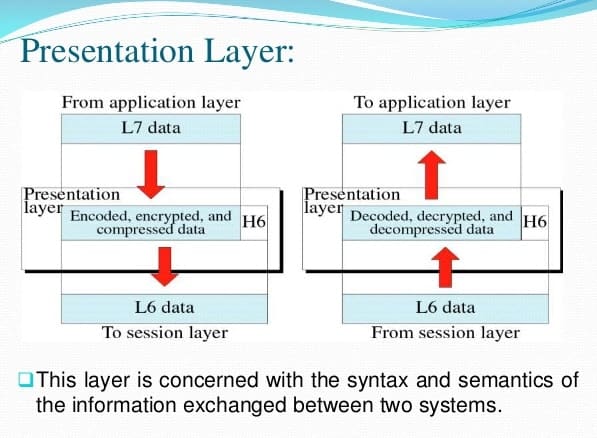What is the Presentation Layer?
Presentation Layer is the Layer 6 of the seven-layer Open Systems Interconnection (OSI) reference model. The presentation layer structures data that is passed down from the application layer into a format suitable for network transmission. This layer is responsible for data encryption, data compression, character set conversion, interpretation of graphics commands, and so on. The network redirector also functions at this layer.

Presentation Layer functions
- Translation: Before being transmitted, information in the form of characters and numbers should be changed to bit streams. Layer 6 is responsible for interoperability between encoding methods as different computers use different encoding methods. It translates data between the formats the network requires and the format the computer.
- Encryption: Encryption at the transmitter and decryption at the receiver
- Compression: Data compression to reduce the bandwidth of the data to be transmitted. The primary role of data compression is to reduce the number of bits to be transmitted. Multimedia files, such as audio and video, are bigger than text files and compression is more important.
Role of Presentation Layer in the OSI Model
This layer is not always used in network communications because its functions are not always necessary. Translation is only needed if different types of machines need to talk with each other. Encryption is optional in communication. If the information is public there is no need to encrypt and decrypt info. Compression is also optional. If files are small there is no need for compression.
Explaining Layer 6 in video
Most real-world protocol suites, such as TCP/IP, do not use separate presentation layer protocols. This layer is mostly an abstraction in real-world networking.
In short, the presentation layer
Makes sure that data which is being transferred or received should be accurate or clear to all the devices which are there, in a closed network.
- ensures proper formatting and delivery to and from the application layer;
- performs data encryption; and
- manages serialization of data objects.